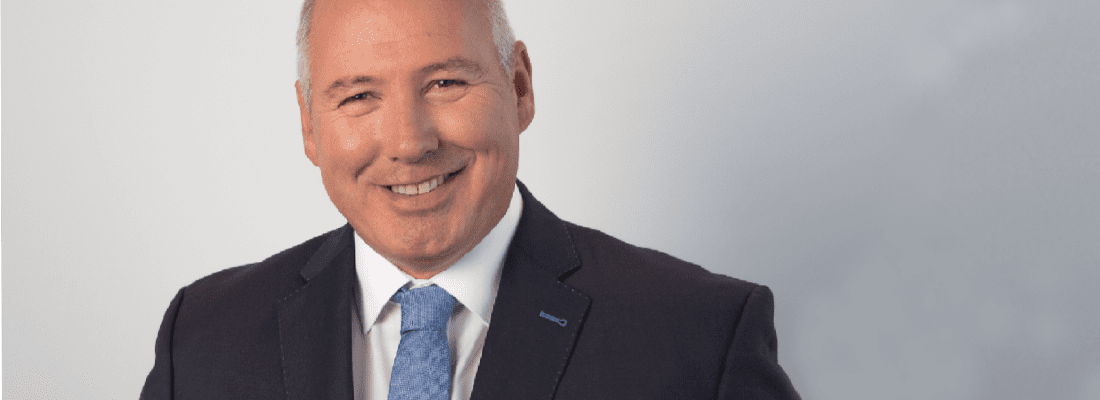Amsterdam Drone Week Board of Recommendation-member Eugene Tuijnman (54) is a well-known and respected entrepreneur and recognized as Digital Leader within the IT industry. He founded IT-company SLTN in 1997 as a startup and grew the company to a leading Dutch System Integrator and Managed Services Provider with an annual revenue of $ 195m and 500+ employees. We spoke with him about his vision on the drone industry.
SLTN is an IT-System Integrator. That's not the first thing that comes to mind when it comes to drones. What does SLTN have to offer the industry?
Tuijnman: “In general Drones are currently used for two main business applications. Air transport purposes on the one hand. And drones are also flying carriers of sensor arrays. These sensors, for instance camera’s of IOT devices, are all collecting data. Connecting all the devices gathering and analyzing the data is an IT activity. This is why SLTN as an IT company is active in the drones-industry. We do not fly drones ourselves, but we use our knowledge, infrastructure and our network of manufacturers to offer an independent platform on which drone data can be further analyzed and distributed to all parties involved.”
How do you view the near future of UAVs?
Tuijnman: “At the moment I see one very important blockade, especially in a highly dense population like the Netherlands; where can you fly and when?
I am referring to authorities that deal with drone traffic. One of the big inhibitors is legislations and regulation. If you were to optimize this together with the affordability and fast-growing maturity of the technology, it would open up enormous possibilities. Legislation and regulations must therefore be optimized for a broader application of drones. Once the performance, especially that of the batteries which would allow them to fly longer, would also optimize further, then I think we are on the verge of a huge growth in drone applications. Especially in the sectors: safety, environment, and inspections.”
You mention legislation and regulations as an important obstacle, but what about public opinion? Are most people ready for the large-scale use of drones?
Tuijnman: “I guess you are mainly referring to privacy with for instance the use of the camera’s on drones. I believe that these issues can be resolved with proper information and guidance to the public. But we also have to be realistic: cameras are already everywhere and recording everything, hanging over every highway and in corners of many streets. But for drone applications such as buildings and infrastructural objects maintenance and inspections (e.g. bridges and roads), there is a huge opportunity for the use of drones.”
What do you think of the proposals that the European Commission recently made to regulate drone traffic?
Tuijnman: “It is becoming an interaction of forces. Forces like the aviation authorities, the various political institutes like provinces, municipalities, the EU and the overall involved industry. The European Commission proposal is an important step in the right direction. It’s a very complex situation. Not only because of the safety issues, rules, regulations, politics and the interest of all other parties involved.”
Until now we have mainly talked about smaller drones. How do you think passenger transport by UAVs will develop?
Tuijnman: “This will evolve rapidly as well. Helicopters are already allowed to fly, so why can't a big passenger transport drone be able to do the same? I expect the first passenger transport drones will be approved and certified, and fixed routes for on- and off peoples transport will be available in a couple of years. Of course, we will have to wait for adjusted laws and regulations. With regards to the conventional passenger transport, drones will be powered by batteries and will therefore be cleaner and more durable for the environment.”
In which sector does SLTN see the most opportunities for drone applications?
Tuijnman: “For SLTN we provide a platform. Every drone that collects data, is data that can be used for business purposes. Deployment of data collection by sensors will increase exponential. This will apply to civilian applications like the police, fire brigade and regulation authorities. And, of course, the inspection of buildings, infrastructure and installations is an excellent playing field for drone applications. In summary: when drones are used more and more, and therefore more and more data is collected, it becomes very interesting for SLTN to analyze, secure and distribute that data.
In order to analyze the collected data, computing power is needed and data must also be stored for a long time. These are all business topics in which SLTN excels.”
How important is it that the industry meets once a year in Amsterdam?
Tuijnman: “The eco network of an event such as Amsterdam Drone Week is highly important. By talking to each other and getting to know each other, the communication threshold is lowered and therefore an increase in successful dialogues will be enabled. Because both legislative and commercial parties are present, a spontaneous dialogue is likely to emerge. Moreover, Amsterdam and the Netherlands show the international community that they can fulfill an important role in this area of innovative technology. After all, not everything has to take place in Silicon Valley.”






